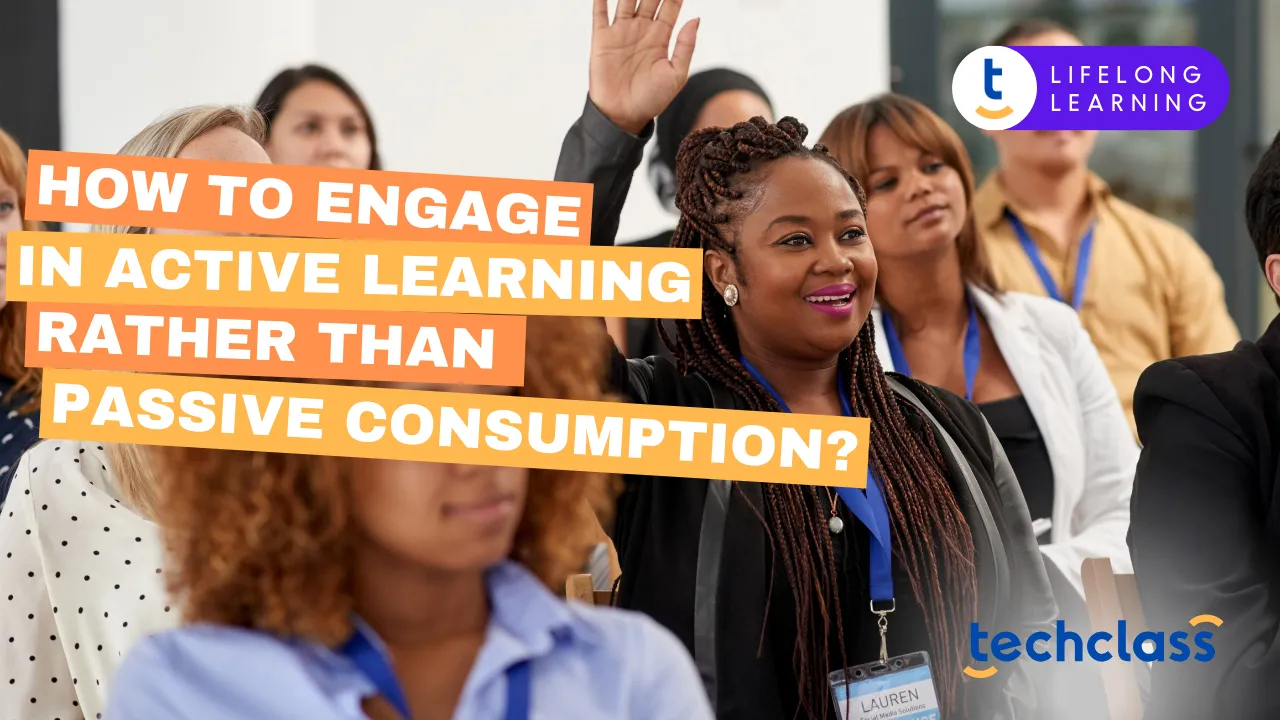
In our information-saturated world, it’s easy to fall into the trap of passively consuming knowledge, scrolling through articles, watching tutorials, or listening to podcasts, without truly processing or applying what we’ve absorbed. While passive consumption has its place, it’s often not enough to generate lasting understanding or real-world skills. That’s where active learning comes in.
This post will help you move from passive knowledge intake to active engagement with what you’re learning, so that your efforts translate into insight, improvement, and results.
Passive consumption is when you take in information without actively engaging with it. You read a book, watch a documentary, or listen to a podcast. It’s easy, convenient, and can help you get acquainted with new ideas or reinforce old ones.
But here’s the catch: passive learning often results in lower retention and minimal practical application. You might remember an interesting fact or two, but it rarely sticks without further effort.
Active learning, by contrast, means doing something with what you learn. It involves questioning, applying, experimenting, and reflecting. Instead of watching a tutorial, you create a project based on it. Instead of reading an article, you summarize it, discuss it, or teach it to someone else.
As adults, we often juggle busy schedules, professional commitments, and personal responsibilities. We need learning that is efficient, memorable, and impactful. Active learning achieves this by making knowledge stick and skill development more natural.
In fact, research shows that when we actively engage with material, by applying, discussing, or teaching it, we are more likely to remember it and transfer it into action. And in the workplace or in daily decision-making, this transfer is what really counts.
Studies conducted by institutions like Carnegie Mellon and Harvard show that students of all ages, children to adults, learn better when they are mentally, physically, and emotionally engaged. It’s not just about “hands-on” learning, but also “minds-on” and even “hearts-on” involvement.
Whether it’s through discussion, problem-solving, or using tools like AI-assisted platforms, learners who are actively involved consistently outperform those who passively consume information, even when the latter think they are learning more.
Let’s be clear: passive learning has benefits. It’s great for:
However, it should be your starting point, not your end goal. For learning to be effective, especially for adults looking to upgrade skills or solve real-world problems, you need to transition from passive to active engagement.
Ready to make your learning more active? Here’s how to transform passive consumption into deeper learning:
After reading or watching something, ask yourself:
Even a two-minute reflection can solidify what you’ve just learned.
One of the best ways to test your understanding is to teach the material, whether it’s to a friend, a colleague, or even a voice note to yourself. Teaching forces you to organize your thoughts and identify gaps in your knowledge.
If you’re learning about project management, try using one technique in your current work. If you’re learning a new language, write a journal entry or have a short conversation. After all, application turns theory into experience.
Whether it’s a learning group, a social media community, or a coworker, talk about what you’re learning. Discussions expose you to new viewpoints and challenge you to clarify your understanding.
Instead of just watching a video, pause to take notes. If you’re listening to a podcast, jot down a few actionable insights. Highlight parts of articles and write quick summaries in your own words.
Define what you want to achieve from a learning session: Is it understanding a concept? Completing a project? Solving a specific problem? Tracking your learning turns consumption into a deliberate practice.
You don’t have to eliminate passive consumption. In fact, it works best when used strategically alongside active learning.
The goal is to convert passive intake into action, reflection, or dialogue.
Let’s say you’re learning about project management. Here’s how a balanced approach could look:
By actively interacting with what you consume, you shift from being a passive observer to a knowledge activist, someone who not only learns but creates, tests, and evolves through the process.
In a world full of content, it’s easy to get stuck in a cycle of passive consumption. But if you want to truly grow, professionally, personally, intellectually, you need to engage with your learning.
Active learning doesn’t require more time. It just requires more intention.
So next time you sit down to “learn,” don’t just watch, read, or listen. Interact. Apply. Share. Reflect. That’s where real growth happens.


